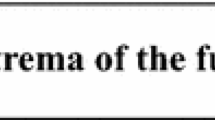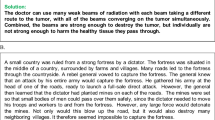Abstract
This study investigated whether or not the teaching of matched examples and nonexamples in the form of common errors would improve student performance in applying a procedure to previously unencountered instances, and whether the common errors would be most beneficial in generality form, in example form, or in both forms. Participants were 141 first-year music students, who were randomly assigned to four groups and given the task to learn a procedure that was presented in a self-contained booklet. A pretest-posttest experimental design was used, with a prerequisite test given as a screening device. The two independent variables were the absence and presence of the common errors in the generality form and in the example form (2 x 2 factorial design). Results indicated that the teaching of common errors in the generality form significantly improved learning a procedure at the application level of behavior.
Similar content being viewed by others
References
Ali, A. M. (1981). The use of positive and negative examples during instruction.Journal of Instruction Development, 5, 2–7.
Bentti, F., Golden, A., & Reigeluth, C. M. (1983).Teaching common errors in applying a procedure. IDD&E Working Paper No. 17. Syracuse, NY: Instructional Design, Development, & Evaluation Program, School of Education, Syracuse University.ED 289 464
Borg, W. R., & Gall, M. D. (1979).Educational research. New York: Longman.
Bruner, J. S. (1960).The process of education. New York: Vintage Books.
Brown, J. S., & Burton, R. R. (1978). Diagnostic models for procedural bugs in basic mathematical skills.Cognitive Science, 2, 155–192.
Campbell, D. T., & Stanley, J. C. (1963).Experimental and quasi-experimental designs in research. Boston: Houghton Mifflin.
Clark, C. D. (1971). Teaching concepts in the classroom: A set of teaching prescriptions derived from experimental research.Journal of Educational Psychology, 62, 253–276.
Darlington, R. B. (1975).Radicals and squares. Ithaca, NY: Logan Hills Press.
Gagne, R. M. (1985).The conditions of learning (4th ed.). New York: Holt, Rinehart, and Winston.
Garduno, A. O., Marcone, S., & Reigeluth, C. M. (1984).Teaching common errors in applying a procedure. IDD&E Working Paper No. 18. Syracuse, NY: Instructional Design, Development, & Evaluation Program, School of Education, Syracuse University.ED 289 465
Gropper, G. L. (1983). A behavioral approach to instructional prescription. In C. M. Reigeluth (Ed.),Instructional design theories and models: An overview of their current status. Hillsdale, NJ: Lawrence Erlbaum Associates.
Jassal, R. S., & Tennyson, R. D. (1981-82). Application of concept learning research.International Journal of Instructional Media, 9, 185–205.
Markle, S. M., & Tiemann, P. W. (1969).Really understanding concepts. Champaign, IL: Stripes.
Merrill, M. D. (1983). Component display theory. In C. M. Reigeluth (Ed.),Instructional design theories and models: An overview of their current status. Hillsdale, NJ: Lawrence Erlbaum Associates.
Merrill, M. D., & Tennyson, R. D. (1977).Teaching concepts: An instructional design guide. Englewood Cliffs, NJ: Educational Technology Publications.
Tennyson, R. D., & Park, O. C. (1980). The teaching of concepts: A review of instructional design research literature.Review of Educational Research, 50, 55–70.
Tennyson, R. D., Woolley, F. R., & Merrill, M. D. (1972). Exemplar and nonexemplar variables which produce correct concept classification behavior and specified classification errors.Journal of Educational Psychology, 63, 144–152.
Tinklepaugh, J. A., & Reigeluth, C. M. (1984).Teaching common errors in applying a procedure. Unpublished paper, Syracuse University, School of Education, Instructional Design, Development, and Evaluation Department, Syracuse, NY.
Williams, P. B., & Carnine, D. W. (1981). Relationship between range of examples and of instructions and attention in concept attainment.Journal of Education Research, 74, 144–148.
Author information
Authors and Affiliations
Rights and permissions
About this article
Cite this article
Marcone, S., Reigeluth, C.M. Teaching common errors in applying a procedure. ECTJ 36, 23–32 (1988). https://doi.org/10.1007/BF02770015
Issue Date:
DOI: https://doi.org/10.1007/BF02770015




